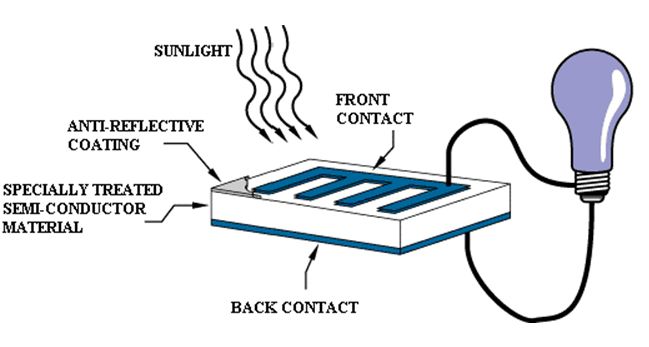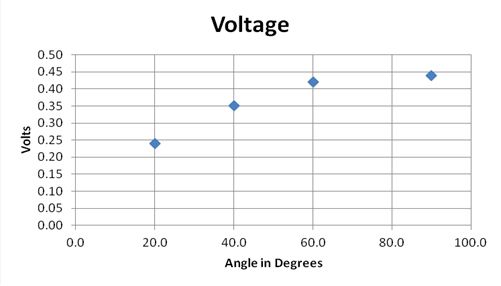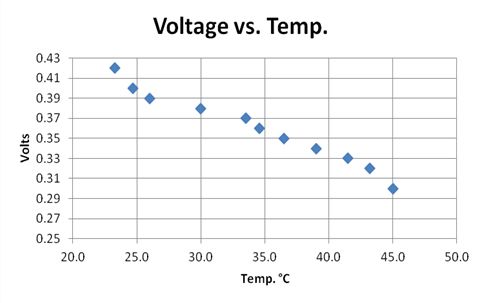My Cart
Your Shopping Cart is currently empty. Use Quick Order or Search to quickly add items to your order!
Mike Isley
Product Developer
All of your students have seen photovoltaic solar cells used in a variety of ways; however, students may have misconceptions in understanding what influences solar cell output. One survey of middle school students indicated that they knew a solar cell required light to generate electricity, but most thought it was heat that created energy and that solar cells produce more energy on a hot day than a cold day.1 Actually, solar cells are less efficient as the temperature of the cells rises above 25° C (77° F). This activity explores how ambient temperature and the angle of illumination can affect solar cell output in volts.
A typical solar cell is composed of a specially treated semiconductor wafer made of silicon or similar elements (see Figure 1). This wafer is sandwiched between 2 plates, 1 positive and the other negative. When photons of light strike the semiconductor, electrons are knocked loose from atoms of the semiconductor, and they flow through a closed circuit as electric current.2 Solar cells are connected in series or parallel to make rectangular panels that produce direct current at a given voltage and amperage.

For teacher demonstration or lab group of 2 to 4 students

Data Table 1
| Angle (°) | Voltage |
|---|---|
| 90.0 | |
| 60.0 | |
| 40.0 | |
| 20.0 |


Data Table 2
| Temperature (° C) | Voltage |
|---|---|
| Angle (°) | Voltage |
|---|---|
| 90.0 | 0.44 |
| 60.0 | 0.42 |
| 40.0 | 0.35 |
| 20.0 | 0.24 |

| Temperature (° C) | Voltage |
|---|---|
| 23.3 | 0.42 |
| 24.7 | 0.40 |
| 26.0 | 0.39 |
| 30.0 | 0.38 |
| 33.5 | 0.37 |
| 34.6 | 0.36 |
| 36.5 | 0.35 |
| 39.0 | 0.34 |
| 41.5 | 0.33 |
| 43.2 | 0.32 |
| 45.0 | 0.30 |

1M. Ing, M. Ward, and E Haberer. 2013. Building on students’ knowledge of solar cells. Science Scope 36 (6): 21–29.
2NASA Science News. Available at: http://science.nasa.gov/science-news/science-at-nasa/2002/solarcells. Accessed December 11, 2013.